Close to 150 students across multiple disciplines will showcase their scholarship at the Fall 2022 Research Symposium, hosted by Undergraduate Research & Fellowships. The symposium, where students are invited to present their research visually as posters, will take place Friday, October 21, from 10:30 a.m. to noon in Roone Arledge Auditorium.
Project Previews
We recently caught up with eight enterprising academics for a preview of their projects. Here, they share what drew them to their subjects, what they discovered, and what they learned from the twists and turns of the research process.
Ope Lekan CC’23
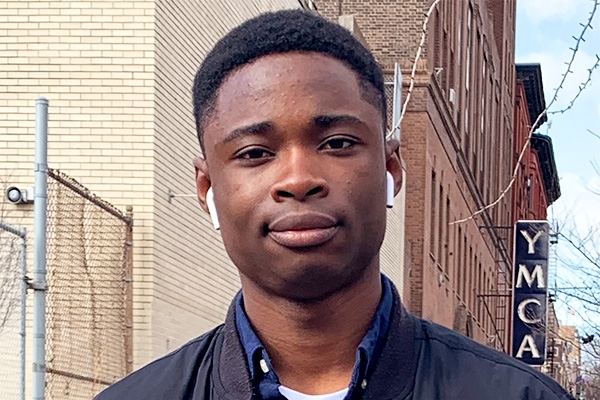
Major: Biology, with a concentration in psychology
Research topic: Studying the mechanism behind the stability of the gut microbiome in order to better understand how this affects human health and wellness. Specifically, my partners and I focused on fecal microbiota transplants (FMTs), a therapeutic procedure where fecal matter is transferred from a healthy individual to an individual whose gut microbiome has been disrupted; working with mice, we investigated the major factor in determining FMT success.
Why I chose it: A huge interest of mine is an up-and-coming field — the gut-brain link; this drew my attention to the Wang Lab at CUMC, which is a microbiome lab. This research topic allowed me the opportunity to better understand the foundational mechanism going on in the gut before exploring how that affects human health.
Biggest takeaway: The scientific research procedure! In order to cultivate the cells we had to make food (“minimal media”) to allow us to add variables. The process took about three weeks; we had to do a lot of retrials to get the right formula. I found the experience vital, as it helped me better understand the goal of research, which is to explore and to find unknown answers, but not in a random way; rather, in a scientifically backed up, trial-and-error way. I now like to call it “scientific guessing.”
Sadie Klaus BC’23, Lillian Rountree CC’23 and Wynna Huang CC’24
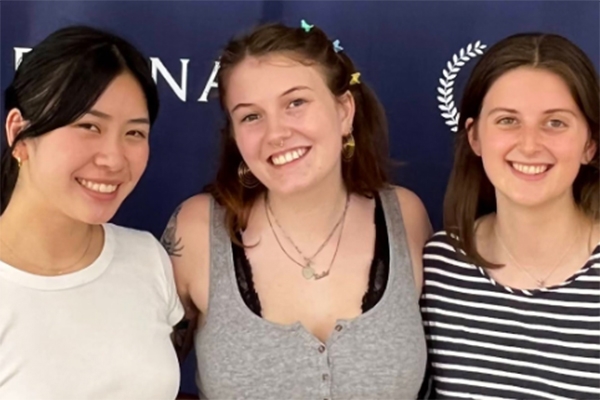
Left to right: Huang, Klaus, Rountree.
Sadie Klaus BC’23
Major: Economics and mathematics
Lillian Rountree CC’23
Major: Statistics and French
Wynna Huang CC’24
Major: Statistics and sociology
Research topic: Understanding tuberculosis transmission within U.S. correctional facilities. We created a model, broken down by state and year, to estimate the probability of becoming infected with TB bacteria in these prison and jail environments. Though there are very few TB cases in the United States each year among the general population, incarcerated people are disproportionately burdened with infection, and our research sought to elucidate why and how prison and jail conditions abet the spread of disease.
Why we chose it: We all participated in the Columbia Summer Undergraduate Research Experiences in Mathematical Modeling program. Sadie is interested in topics of social justice, such as prison abolition and justice for those most abused by the criminal justice system; Lillian wants to work with infectious disease modeling; and Wynna seeks to apply elements of data science through a public health lens. It was then a matter of combining our ideas into one cohesive project that still connected back to our individual research interests.
Biggest Takeaway:
Rountree: I came away with a greater appreciation of the actual impact of tuberculosis on the U.S. today. TB has been affecting humans for literal millennia. Partially because of that, there is a whole cultural imagination around it that you do not see with other diseases (think of the trope of the consumptive artist in the 19th century). Yet the actual burden of TB today looks very different from those ideas that focus on the disease as something of the past. It’s within our ability to lower TB rates in correctional facilities — we just need the willingness to do so. As for the research process, my takeaway is that there are so many dead ends, but there’s value in each of them, even if it’s just the value of knowing you can rule out one more idea.
Huang: I found the research process to be very different from my expectations, as our project was something our group conceived of and, when we came across obstacles, we had to find creative solutions.
Klaus: My biggest takeaway was how strenuous the research process can be. Much of our data was scattered among many sources, and at times, simply unavailable/nonexistent. It’s fascinating to me how much information about the U.S. carceral system is hidden behind paywalls and a desire for “confidentiality.”
Roberta Hannah CC’24
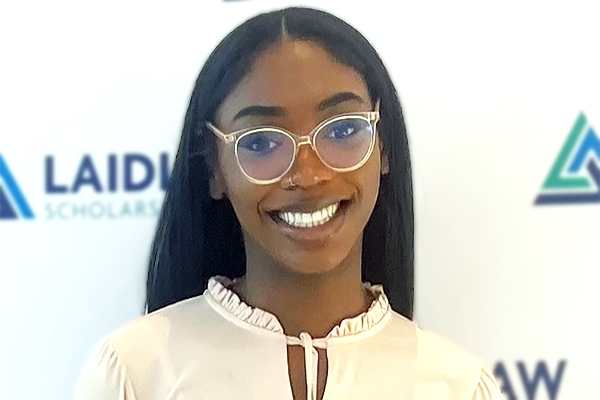
Major: African American and African Diaspora studies, with a concentration in psychology
Research topic: Exploring the ways in which internet culture is changed by the ways Black female youth use it, and how outside audiences learn about urban American culture that way as well. Like typical teenagers, many Black girls often use the internet to make friends and express themselves or their realities. But with the rise in mainstream attention to urban cultures and internet careers, some use the internet to gather followings that can boost their socioeconomic positions. Social media allows these young women to create safe spaces where they will be respected; they then turn that respect into financial gain, which in their minds will improve how society perceives them, as many of them are victims of racial, gender and class discrimination. With their social media followings and newfound income, the showcase of these young women’s realities (ranging from mere proximity to street life, to gang affiliation and participation in illicit activities) then influences a broader audience, contributing to the rising prevalence of elements of Black urban life in geographically and socially distant areas.
Why I chose it: I initially wanted to explore how outside audiences learn about things like gang culture or activity, but there was a huge gap in the archives about street life as it relates to women. From my own lived experiences, I knew women were active participants, and once I began to explore this project from only the woman’s perspective, I saw how much it was actually young girls who were responsible for this cultural diffusion. One significant discovery in my exploration was about a 14-year-old female assassin who was actively ignored by scholars, but after reading a piece by Desmond Patton [a professor at the School of Social Work], I learned that there’s a chance her actions completely reshaped Chicago’s street culture.
Biggest takeaway: That despite all of the gender and sexuality studies, as well as digital studies of urban life, scholars continued to overlook this group of girls whose activities have had profound implications on social media trends (like dances, fashion, humor) and our current activism. Many of them occupy what I like to call a “gender limbo.” They survive as traditionally feminine, almost politically conservative-presenting girls while living in this traditionally masculine urban world/economy, creating a space where gender norms both actively and do not apply at all because our perceptions of gender are too binary for their reality. They are such a fascinating group with such an intricate and beautiful culture, despite the violence and discrimination, and it almost feels as though we are just now able to comprehend the simplest parts of their life. Who would have thought academia would be light years behind a group of young girls?
Aiden Sagerman CC’24
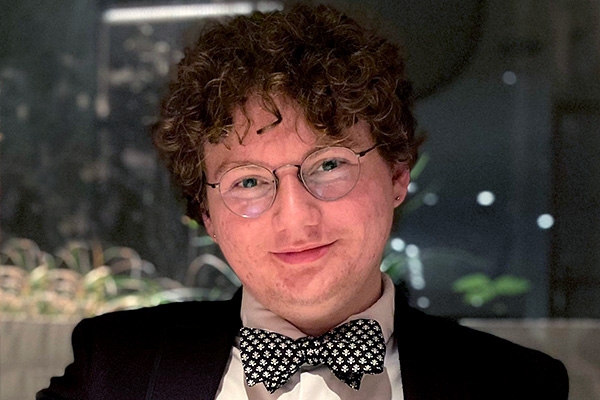
Major: Comparative literature and society, and mathematics
Research topic: Studying the relationship between American eugenics and Italian fascism in the early 20th century. Today when we talk about “eugenics,” we’re generally thinking about Nazi Germany’s policies toward people it considered to be “lesser races.” However, the early-20th-century United States had its own eugenics movement that deeply influenced both politics and science. By our modern political standards, the American eugenics movement is difficult to pin down — American eugenicists were involved with progressive causes like environment conservation and birth control, but also reactionary causes like racialized immigration restriction and nonconsensual sterilization of those deemed “undesirable.”
Why I chose it: Intellectually, I was drawn to exploring this idea because of the ideological conflicts between the American eugenicists and the Italian fascists. Although they were both reactionary movements with connections to eugenics, that’s about where the similarities end. The American eugenicists were aristocratic conservatives. They wanted to preserve the existing social hierarchy, and looked down on mass politics. They worked through back-room deals with politicians in elite social clubs, not by convincing anyone — least of all voters — that they were right. The Italian fascists, on the other hand, thought of themselves as a revolutionary mass political movement — in other words, exactly the people whom the American eugenicists disdained. Their approaches to eugenics were also quite different — for example, the American eugenicists believed that Italians were racially inferior. Despite all this, though, the American eugenicists were fascinated by Italian fascism, praising it in everything from articles in Harper’s Magazine to their personal letters. I really wanted to find out what drew them in, and how they overcame these contradictions.
On a personal note, one of my Jewish great-grandparents immigrated to America from Eastern Europe in 1906. Fifteen years later, he wouldn’t have made it — American eugenicists passed a law setting quotas on Eastern European immigration to stop Jews from entering the country. A century after my great-grandfather’s arrival, I grew up in San Francisco and spent my childhood surrounded by redwoods. Unknown to most Americans, those trees exist today only because of the conservation efforts of American eugenicists. I want to understand how the eugenicists could believe that Jews like me weren’t actually people, but then still shared the same quintessentially human experience of awe and majesty when confronted by giant, ancient trees. Most importantly, I think studying this history better equips us to handle the present. In America, we often talk about fascism as something far away that could eventually happen here. But that’s not quite right. The legacy of American eugenics is part of the legacy of America itself. Avoiding the explicit relationship between American eugenics and European fascism only serves to defang American eugenics and allow rosy historical narratives of American exceptionalism to go unchallenged. It’s not only that it could happen here — it did, and we need to understand why.
Biggest takeaway: At the start of my project, I knew from another historian that Mussolini’s science advisor had set up meetings with American eugenicists. These meetings seemed like a good place to start, so I set about tracking down information on them. Looking through the eugenicists’ personal letters, I was able to find evidence of the meetings being planned. However, in every case I could find, I also learned that they were later canceled. At first, I was disappointed — the event I’d been trying to learn about didn’t actually happen! But the collections where I read the correspondence were still a treasure trove of relevant knowledge.
There’s also something really exciting about discovering that an event didn’t occur — however small, it’s my first legitimate contribution to the historical record.
Bryley Williams CC’24
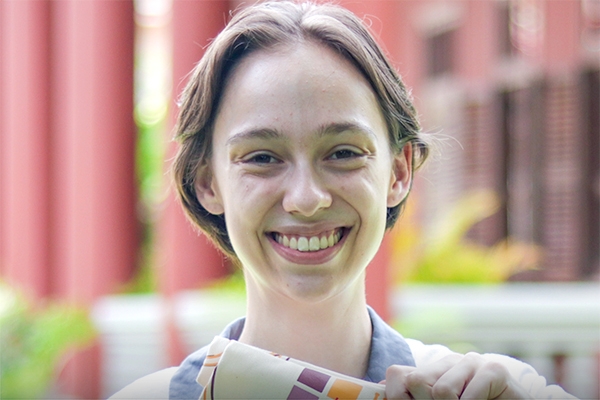
Research topic: Khmer Buddhism during and after Democratic Kampuchea (1975–79), the regime during which the Khmer Rouge sought to turn Cambodia into a classless agrarian utopia. Specifically, I have explored the ways in which Cambodians retained a Khmer Buddhist consciousness during Democratic Kampuchea, a time when religion was abolished, as well as the ways in which the family and Khmer Buddhism were fundamentally intertwined during the regime and in its aftermath. As a Columbia University Laidlaw scholar, I have been pursuing this research for two summers, and this past summer I traveled to Cambodia to participate in the Center for Khmer Studies’ Junior Resident Fellows Program and continue my project.
Why I chose it: I have always been interested in the intersections between religion and memory, especially during and after collectively traumatic events. I visited Cambodia in 2019, and I left with many questions about Khmer Buddhism, particularly about the relationship between the living and the dead in the aftermath of Democratic Kampuchea. The Laidlaw Scholars Program then provided me with a wonderful chance to pursue this as an extended independent research project.
Biggest takeaway: Perhaps it seems rather simple and obvious, but that the abolition of religion in no way equates to the complete destruction of religion — or even the absence thereof. This project made clear that institutional religion is very different, and far easier to root out, than personal religious consciousness. Religion, to me, is so compelling because it exists on these different planes. My other big takeaway is that in research, when you seek answers to an initial question, you find yourself discovering a thousand new questions you’d never previously wondered about. There’s always more to explore!
Fatima Ahmad CC’25
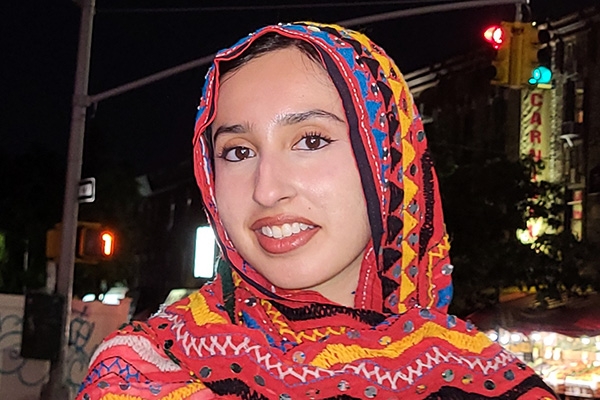
Major: Middle Eastern and South Asian studies, with a concentration in political science
Research topic: Exploring the Partition of 1947 — a period in which 15 million people were uprooted and 1–2 million were killed — within the Indian Subcontinent through the lens of literature, particularly that of Saadat Hasan Manto. What are we able to learn about this pivotal moment in history through literature that is missing from our historical retellings? I soon came to focus on the story of Noor Jehan, noticing a strong contrast in the way Noor Jehan, a renowned actress and singer, was spoken about in comparison to the women of Partition literature. Why the difference?
At this point, my research took another turn. Reflecting on my methodology — the process of close reading, putting stories into dialogue with one another and building upon ideas — was extremely insightful. Using my own journey thus far as a case study, I wanted to show that literature, when taught in conjunction with history, becomes a powerful tool in humanizing the experiences of others. I asked, how can the Pakistani education system be reformed to take into account the importance of literature? I am in the process of further researching this question.
Why I chose it: I have always been drawn to the history of South Asia; as a Pakistani American, I have parents and family who recount the horrific tales of the Partition to this day. I desired to share these stories with a Western audience who generally hold a very narrow view of this event; many do not even know it happened, and most remain unaware of the weight it carries.
Biggest takeaway: That research, like humans, is ever-changing. Although I came into this work with an initial question, a starting flame, I ended the summer with a completely different project than anticipated. And that’s OK. To contribute to any field of academia, to dedicate time and energy, to pull yourself up from any setbacks, all of it is worth it if your research is first meaningful to yourself.